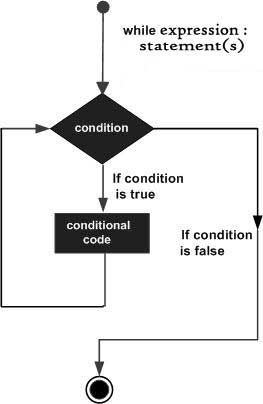python学习之while循环
Python 编程中 while 语句用于循环执行程序,即在某条件下,循环执行某段程序,以处理需要重复处理的相同任务。其基本形式为:
while 判断条件: 执行语句……
执行语句可以是单个语句或语句块。判断条件可以是任何表达式,任何非零、或非空(null)的值均为true。
当判断条件假false时,循环结束。

实例:
#!/usr/bin/env python count = 0 while (count < 9): print 'The count is:', count count = count + 1 print "Good bye!"
输出结果:
The count is: 0 The count is: 1 The count is: 2 The count is: 3 The count is: 4 The count is: 5 The count is: 6 The count is: 7 The count is: 8 Good bye!
while 语句时还有另外两个重要的命令 continue,break 来跳过循环,continue 用于跳过该次循环,break 则是用于退出循环,此外"判断条件"还可以是个常值,表示循环必定成立,具体用法如下:
# continue 和 break 用法 i = 1 while i < 10: i += 1 if i%2 > 0: # 非双数时跳过输出 continue print i # 输出双数2、4、6、8、10 i = 1 while 1: # 循环条件为1必定成立 print i # 输出1~10 i += 1 if i > 10: # 当i大于10时跳出循环 break
在 python 中,while … else 在循环条件为 false 时执行 else 语句块:
实例:
#!/usr/bin/python count = 0 while count < 5: print count, " is less than 5" count = count + 1 else: print count, " is not less than 5"
运行结果:
0 is less than 5 1 is less than 5 2 is less than 5 3 is less than 5 4 is less than 5 5 is not less than 5
作者:凉生墨客
本文版权归作者所有,欢迎转载,但未经作者同意必须保留此段声明,且在文章页面明显位置给出原文连接,否则保留追究法律责任的权利。



 浙公网安备 33010602011771号
浙公网安备 33010602011771号